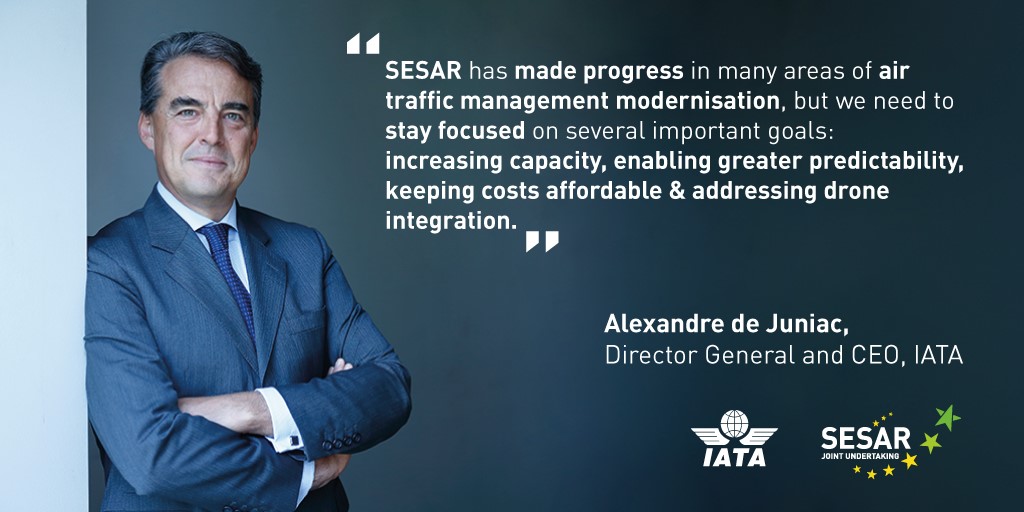
SESAR has made progress in many areas of air traffic management modernisation, but we need to stay focused on several important goals: increasing capacity, enabling greater predictability, keeping costs affordable and addressing drone integration, says Alexandre de Juniac, Director General and CEO, IATA. In this article, he spells out what is at stake for airlines and how the European ATM Master Plan is an effective means for ATM/Aviation stakeholders to stay focused on the big picture.
It is no secret that the European air transport system is facing an infrastructure capacity crisis. Travelers this summer face double the delays of last year. And we don’t see plans for infrastructure investment that come anywhere near being able to accommodate the expected 50% rise in passenger numbers over the next two decades. And it is shocking that Eurocontrol estimates that in 2040 140 million people who need to travel by air in Europe will not be able to because the infrastructure will not be able to cope.
There is a daunting gap to be overcome. But airline demands for infrastructure are rather simple to summarise. We need sufficient capacity, technical capabilities aligned with our requirements and costs that are affordable.
With this in mind, the airline industry has high expectations for the update of the European ATM Master Plan. Our priorities are clear:
- Increased capacity to meet growing demand
- Better predictability so we can plan and execute flights efficiently
- Improved ATM performance under stronger governance
- Effective, safe and secure integration of unmanned aircraft systems (UAS)
The industry’s frustrations with the excruciatingly slow progress of the Single European Sky initiative are well known. So it is great to see progress in many aspects of the SESAR initiative. The work that you are doing is complex. And it is certain that the current ATM Master Plan update will add more demands to the initiative. From the airline perspective, we want you to keep making progress by keeping a firm focus on these four important priorities.
An example of our concern on complexity is the approach to digitalisation. There is no doubt that it is important for airlines and ATM (synchronised at the air- and ground side). In fact we believe that it is so fundamental that it must be integrated into existing R&D projects. Regarding it as a new concept and work stream in the updated Master Plan will only create confusion and slow progress.
Another area that we are watching closely is the approach to UAS. Their integration into the wider family of airspace users must be safe, efficient and fair. That is at the heart of the “We are ONE in the Sky” initiative, which includes IATA and 15 other organisations. UAS operations will only grow in scale—in Europe and abroad. So it is important that we have a comprehensive approach to UAS integration that is aligned with global recommendations being developed through ICAO and EASA. And that includes cost. The additional costs of infrastructure and air navigation services to manage the exponential growth in UAS operations must fall on UAS operators. It’s fair and in line with ICAO recommendations.
Lastly, I cannot emphasise how important keeping a global mind-set. Our passengers, crew and aircraft are deployed globally. Ultimately our hope is for SESAR to provide that basis for a global ATM system. This will ensure airlines and passengers benefit from the same high levels of safety and efficiency, wherever in the world they may be flying.
More information about:
How airspace users and SESAR JU work together
